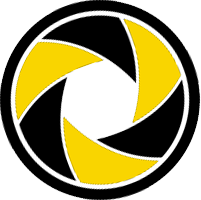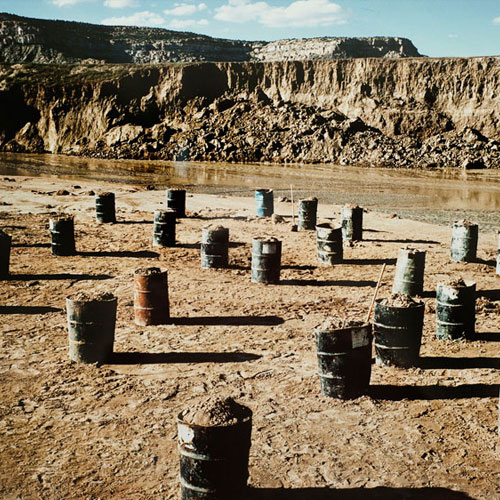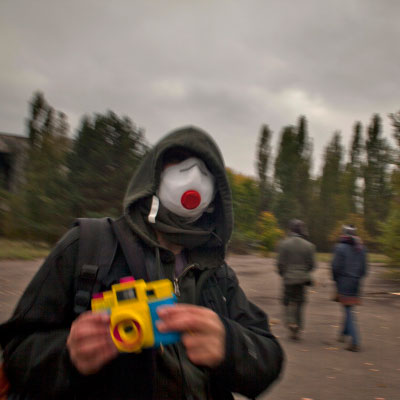
Jack Aeby
Jack Aeby,an American environmental physicist, took the only well-exposed color photograph of the first detonation of a nuclear weapon on July 16, 1945 at the Trinity nuclear test site in New Mexico.

Hidetsugu Aihara
Hidetsugu Aihara was part of a scientific team responsible for documenting the physical and biological devastation of the atomic bombings of Hiroshima and Nagasaki. was deeply involved in the production of the A-bomb documentary film Effects of the Atomic Bomb on Hiroshima and Nagasaki, shot in 1945.
-
 Berlyn Brixner
Berlyn BrixnerEl Paso, NM, United States
Berlyn B. Brixner was an American photographer. He was the head photographer for the Trinity test, the first detonation of a nuclear weapon in July 1945. -
 George R. Caron
George R. CaronGeorge Robert (Bob) Caron (October 31, 1919 – June 3, 1995) was the tail gunner aboard the B-29 Enola Gay during the historic bombing of the Japanese city of Hiroshima on 6 August 1945
-
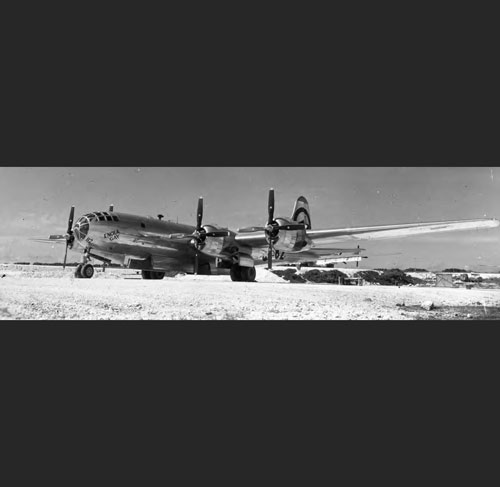 Frank J. Davis
Frank J. DavisFrank J. Davis was in 6th Detachment of Medical Museum Art Service as a medical photographer and after the end of the war in Europe, Davis was deployed to the Pacific on the Island of Saipan.
-
 Lionel Delevingne
Lionel DelevingneFrance / United States
Delevingne has travelled and photographed extensively throughout the world. In his work, he’s sought a conscious merging of politics and art. Born in France, he was deeply impacted by the social and political unrest that occurred in Paris in 1968. -
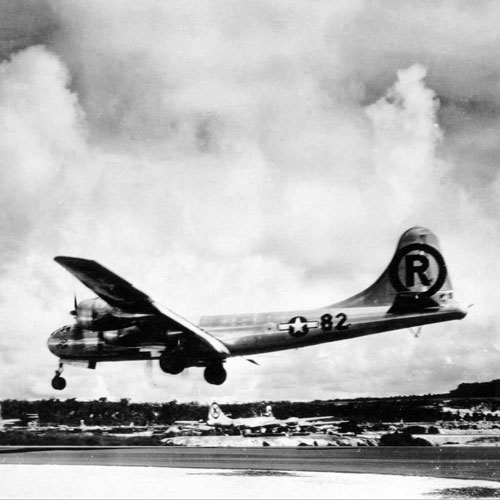 Max Desfor
Max DesforMax Desfor was a wire service war photographer assigned to the staff of Admiral Chester W. Nimitz’s Pacific fleet. In August 1945, Desfor photographed the Enola Gay’s crew upon their Saipan landing after dropping the atomic bomb on Hiroshima.
-
 Harold Edgerton
Harold EdgertonHarold “Doc” Edgerton was an American scientist and researcher noted for creating high-speed photography techniques had a major role in photographing and recording nuclear tests for the US through the fifties and sixties for the Atomic Energy Commission.
-
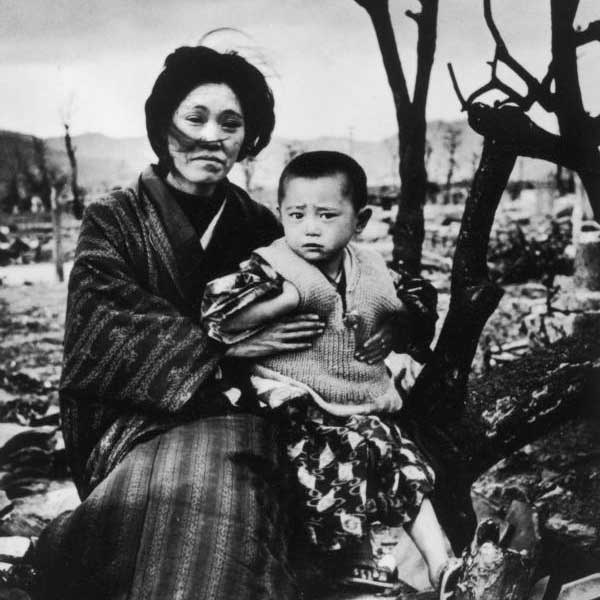 Alfred Eisenstaedt
Alfred EisenstaedtAlfred Eisenstaedt (December 6, 1898 – August 23, 1995) was a German-born American photographer and photojournalist. He began his career in Germany prior to World War II but achieved prominence as a staff photographer for Life magazine after moving to the U.S. Life featured more than 90 of his pictures on its covers, and more than 2,500 of his photo stories were published.
-
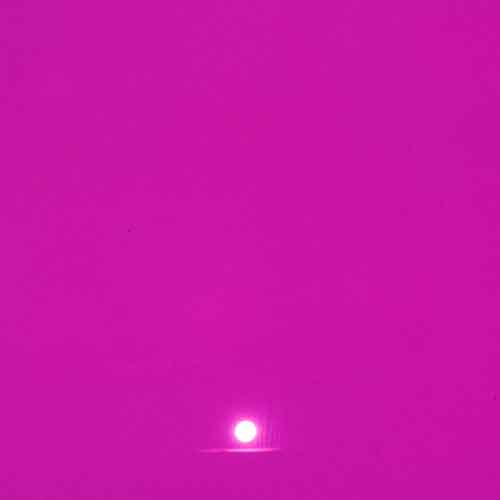 J. R. Eyerman
J. R. EyermanJ. R. Eyerman was an American photographer and photojournalist. He covered World War II for Life on the European and Pacific fronts and was one of the first to reach Hiroshima after the atomic bomb blast and later photographed nuclear test at the Nevada Testing Site.
-
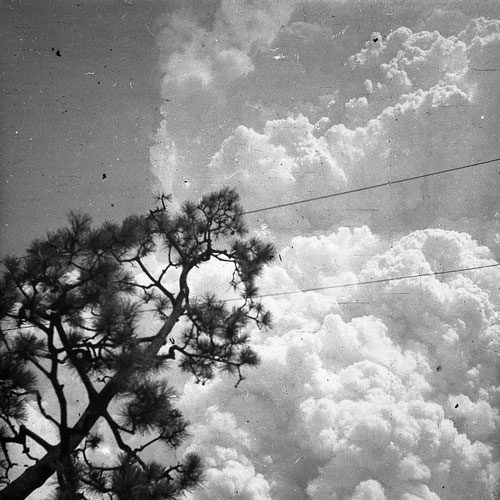 Toshio Fukada 深田敏夫
Toshio Fukada 深田敏夫Toshio Fukada (深田 敏夫, Fukada Toshio, 1928–2009) was a Japanese photographer who took 4 photographers of the Hiroshima bomb about 2.6 kilometers southeast of the hypocenter immediately after the atomic bombing. He when he was 16 years old and worked at Army Ordnance Depot.
-
 Shigeo Hayashi
Shigeo HayashiShigeo Hayashi 林 重男 was a Japanese photographer with the Japanese magazine FRONT. In September 1945 he was one of two photographers assigned by the Special Committee for the Investigation of A-bomb Damage to document the aftermath of the Atomic bombings of Hiroshima and Nagasaki. He took several panoramic series of the destruction.
-
 Kenji Higuchi
Kenji HiguchiTokyo, Japan
Kenji Higuchi is the eldest son of a farmer; at the age of twenty-four he was moved to take up photography after viewing Robert Capa’s famous anti-war photos. As a well-known professor of photography at three institutions in Tokyo, and as a veteran instructor at the famous Nippon Photography Institute, Higuchi could have made life easy for himself, become comfortable, but the usual career ladder never attracted him. -
 Bernard Hoffman
Bernard HoffmanUnited States
Bernard Hoffman was an American photographer and documentary photographer.He is, perhaps, most known as the first American photographer on the ground at Hiroshima and Nagasaki after the atomic bomb was dropped in 1945, providing some harrowing glimpses into the destructive power of the bomb. -
 Akira Iwasaki
Akira IwasakiAkira Iwasaki was a prominent left-wing Japanese film critic, historian, and producer of two important, but ill-fated documentaries: The Effects of the Atomic Bomb on Hiroshima and Nagasaki, which was confiscated by Occupation authorities, and The Japanese Tragedy.
-
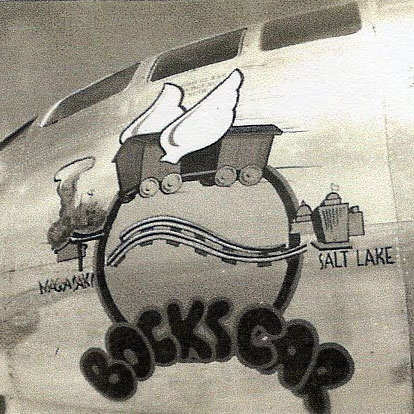 Erwin Johns
Erwin JohnsSeaman Second Class Erwin Johns was born in Milford Township in 1925. During WWII he served in the Navy and was stationed on the small island of Tinian. As a hobby he photographed many of the planes landing on the airstrip he helped to construct. Toward the end of the war he photographed the Enola Gay and Bockscar.
-
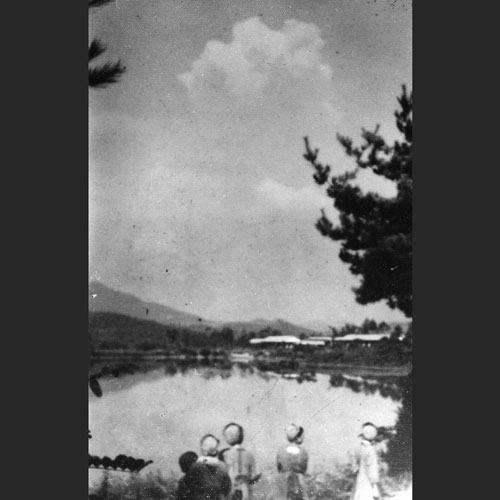 Totaro Karasuda
Totaro Karasuda
鴉田藤太郎Totaro Karasuda was an administrative official at the Hiroshima Sanatorium for Wounded Soldiers, located in the town of Saijo (present-day Higashihiroshima City), Hiroshima Prefecture. He photographed the mushroom cloud from the sanatorium, around 25 kilometers northeast of the hypocenter.
-
 Yotsugi Kawahara
Yotsugi KawaharaYotsugi Kawahara, a member of the photography team of the Army Marine Headquarters, revealed to the public in 1968 a handmade album “Photographs of the A-bomb Damage in Hiroshima” of 23 photographs he took showing the destruction that occurred on August 6, 1945.
-
 Shunkichi Kikuchi
Shunkichi KikuchiShunkichi Kikuchi was a Japanese photographer best known for his documentation of Hiroshima and Tokyo immediately after the war.
-
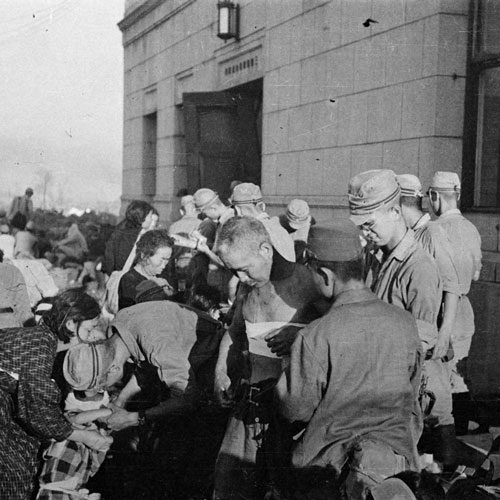 Mitsugi Kishida
Mitsugi KishidaMitsugi Kishida owned a photo studio on the Hondori shopping street in downtown Hiroshima before becoming a member of the news team of the Chugoku Military District Headquarters. He witnessed the mushroom cloud while on an official trip to the town of Yoshida in northern Hiroshima Prefecture and returned to Hiroshima the same day taking photographs from the ruins of his photo studio, around 450 meters from the hypocenter. He was one of the first to photograph the devastated city center.
-
 Gonichi Kimura 木村権一
Gonichi Kimura 木村権一Gonichi Kimura, a member of the Army Photographers’ Team, photographed the mushroom cloud over Hiroshima about 15 minutes after the bombing, approximately. 4,000m from the hypocenter at the grounds of the Army Marine Training Division. Several of his photographs of Hibakusha literally a “person affected by a bomb”, have become iconic representations of the horrors of atomic warfare.
-

Nobuhiko KodairaNobuhiko Kodaira was a military technical captain and plant manager of a radio factory stationed at Kanawajima Island, Ujina who took several photographs of the Hiroshima mushroom cloud from 6.5km south-southeast from the hypocenter.
-
 Igor Kostin
Igor KostinRepublic of Moldova
Igor Fedorovich Kostin (27 December 1936 – 9 June 2015) was one of the five photographers in the world to take pictures of the Chernobyl nuclear disaster near Pripyat in Ukraine, on 26 April 1986. He was working for Novosti Press Agency (APN) as a photographer in Kiev, Ukraine, when he represented Novosti to cover the nuclear accident in Chernobyl. -
 Charles Levy
Charles LevyCharles Levy was a first lieutenant in the 393rd Bombardment Squadron of the 509th Composite Group. He served as a bombadier in the original crew of the Bockscar. Levy participated in the mission to drop the second atomic bomb. He flew in the Great Artiste, rather than Bockscar, because a complication with the flight equipment caused Colonel Tibbets to switch the crews of each plane. The Great Artiste provided instrument support during the flight to Nagasaki.
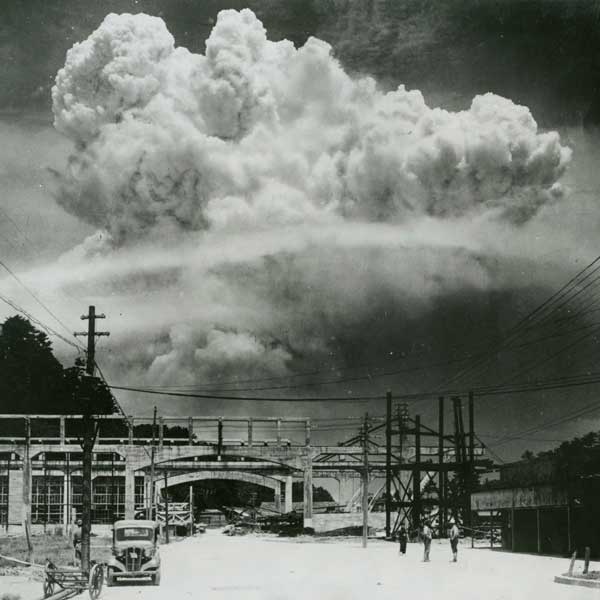
Hiromichi Matsuda
Hiromichi Matsuda was working as a photographic technician at Kawanami Shipyard and took the earliest known photographs from the ground of the Nagasaki mushroom cloud from the rooftop of the shipyard office on Koyagi-jima Island.

Eiichi Matsumoto
Eiichi Matsumoto was a photojournalist for the Asahi Shimbun newspaper, covering the firebombing of several Japanese cities and the nuclear bombing of Hiroshima and Nagasaki.

Wakaji Matsumoto
Wakaji Matsumoto was a studio photographer in Hiroshima whose pre-bomb panoramic photographs of Hiroshima and daily life were discovered in 2008.

Mitsuo Matsushige 松重 三男,
Hiroshima, Japan
Mitsuo Matsushige, a Hiroshima Prefecture employee and X-ray engineer, took several photographs of the Hiroshima bomb from 7000m from the hypocenter.
Yoshito Matsushige 松重美人
Hiroshima, Japan
Yoshito Matsushige is best known for being the only person to capture an immediate, first-hand photographic historical account of the destruction of the atomic bombing of Hiroshima on August 6, 1945.
Dan McGovern & Akira Mimura
United States, Japan
Lt. Col. Daniel A. McGovern directed the U.S. military film-makers documenting the devastation of Hiroshima and Nagasaki from 1945-1946 with cameraman Akira Mimura, and kept copies of the classified Japanese footage for decades.
Carl Mydans
United States
Carl Mydans was an American photographer who worked for the Farm Security Administration and Life magazine. He documented post-war Hiroshima and the relocation of the Marshallese people.
Satsuo Nakata
Satsuo Nakata (1920-1994), a reporter with the Osaka bureau of the Domei News Agency, came to Hiroshima on August 10, 1945. Thirty-two photos taken by him, including some of the city in ruins, have been found. Of those, at least three were published in various newspapers before the arrival of the U.S. occupation forces, telling of the destruction brought about by the atomic bombing.

Joe O’Donnell
Joe O’Donnell was an American military photographer, best known for documenting the immediate aftermath of the atomic bomb explosions at Nagasaki and Hiroshima.
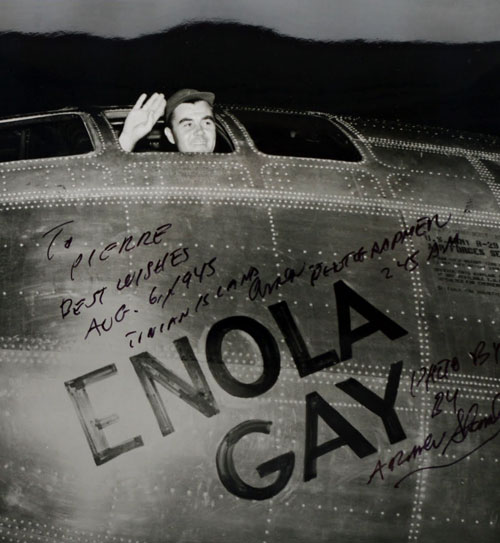
Armen Shamlian
Sgt. Shamlian served in the United States Army Air Force with the 509th Composite Group on Tinian Island in the Pacific. He was the photographer who snapped the memorable photograph of Col. Paul Tibbets waving from the cockpit of the Enola Gay and many other photographs of the historic event.

Masami Ogi 尾木正己
Masami Ogi worked for the Naval Arsenal Pyrotechnic Department in Kaita Town, Hiroshima Prefecture, and took photographs of the bomb and destruction in Hiroshima.

Masami Onuka 尾糠政美
Masami Onuka, a member of the photographic team of the Imperial Japanese Army’s Shipping Command, was ordered to photograph the destruction and human suffering in Hiroshima on the day after the bombing.
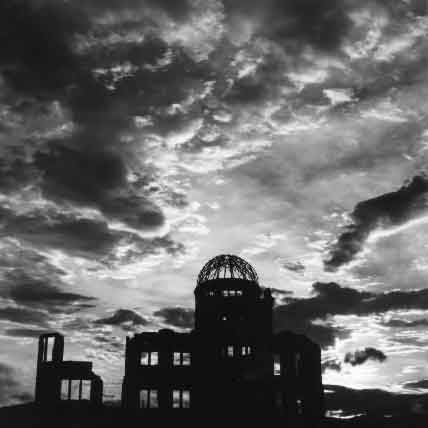
Yuichiro Sasaki
Japan
Yuichiro Sasaki, an independent photographer, recorded Hiroshima’s devastation and recovery from the atomic bombing. Nearly every day, up to the last years of his life, Mr. Sasaki would bicycle around the city and take photos. His passion for photographing Hiroshima began when he returned to his hometown and found the city in ruins.
Amirtharaj Stephen
Bangalore, India
AmirtharajStephen is a documentary photographer from Tirunelveli, India. Follow him on Facebook. He worked in association with The Other Media on a campaign to display his photographs in schools, colleges, and public spaces across India.
Ed Westcott
Oak Ridge, TN, United States
Edward Westcott was a U.S. Army Corps of Engineers photographer who documented the construction, and operation of the Oak Ridge reactor in Tennessee during the Manhattan Project.He also photographed Manhattan Project scientists, military generals, U.S. presidents and senators. He recorded civilian activities in Oak Ridge for the military newspaper and photographed nuclear power stations all over the United States.
Seiso Yamada 山田精三
Seiso Yamada took a photo of the Hiroshima atomic cloud near Mikumari Gorge (Fuchu). It is estimated that the photo was taken two minutes after the explosion, making it the earliest of all images involving the atomic bombing.

Yōsuke Yamahata
Yōsuke Yamahata was a Japanese military photographer who completed the only extensive photographic record of the immediate aftermath of the atomic bombing of Nagasaki on August 10, 1945.
